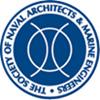Reducing Undesired Wave Reflection at Domain Boundaries in 3D Finite Volume-Based Flow Simulations via Forcing Zones
IF 1
4区 工程技术
Q3 ENGINEERING, CIVIL
引用次数: 1
Abstract
This article reviews different types of forcing zones (sponge layers, damping zones, relaxation zones, etc.) as used in finite volume-based flow simulations to reduce undesired wave reflections at domain boundaries, with special focus on the case of strongly reflecting bodies subjected to long-crested incidence waves. Limitations and possible sources of errors are discussed. A novel forcing-zone arrangement is presented and validated via three-dimensional (3D) flow simulations. Furthermore, a recently published theory for predicting the forcing-zone behavior was investigated with regard to its relevance for practical 3D hydrodynamics problems. It was found that the theory can be used to optimally tune the case-dependent parameters of the forcing zones before running the simulations. Wave reflections at the boundaries of the computational domain can cause significant errors in flow simulations, and must therefore be reduced. In contrast to boundary element codes, where much progress in this respect has been made decades ago (see e.g., Clement 1996; Grilli &Horillo 1997), for finite volume-based flow solvers, there are many unresolved questions, especially:How to reliably reduce reflections and disturbances from the domain boundaries?How to predict the amount of undesired wave reflection before running the simulation? This work aims to provide further insight to these questions for flow simulations based on Navier-Stokes-type equations (Reynolds-averaged Navier-Stokes, Euler equations, Large Eddy Simulations, etc.), when using forcing zones to reduce undesired reflections. The term "forcing zones" is used here to describe approaches that gradually force the solution in the vicinity of the boundary towards some reference solution, as described in Section 2; some examples are absorbing layers, sponge layers, damping zones, relaxation zones, or the Euler overlay method (Mayer et al. 1998; Park et al. 1999; Chen et al. 2006; Choi &Yoon 2009; Jacobsen et al. 2012; Kimet al. 2012; Schmitt & Elsaesser 2015; Perić & Abdel-Maksoud 2016a; Vukčević et al. 2016).通过强迫区域减少三维有限体积流模拟中区域边界的非期望波反射
本文回顾了在基于有限体积的流动模拟中使用的不同类型的强迫区(海绵层、阻尼区、松弛区等),以减少域边界处不希望的波反射,特别关注强反射体受到长波峰入射波的情况。讨论了误差的局限性和可能的来源。提出了一种新型的强制区布置,并通过三维(3D)流动模拟进行了验证。此外,最近发表的一个预测强迫区行为的理论,就其与实际三维流体动力学问题的相关性进行了研究。研究发现,在运行模拟之前,该理论可用于优化受力区的情况相关参数。计算域边界处的波浪反射可能会在流动模拟中造成重大误差,因此必须减少。与几十年前在这方面取得了很大进展的边界元代码相比(例如,见Clement 1996;Grilli&Horillo 1997),对于基于有限体积的流动求解器,有许多未解决的问题,特别是:如何可靠地减少来自域边界的反射和干扰?在运行模拟之前,如何预测不希望的波反射量?这项工作旨在为基于Navier-Stokes型方程(雷诺平均Navier-Stoke方程、欧拉方程、大涡模拟等)的流动模拟提供这些问题的进一步见解,当使用强制区来减少不期望的反射时。术语“强制区”在这里用于描述逐渐迫使边界附近的解朝向某个参考解的方法,如第2节所述;一些例子是吸收层、海绵层、阻尼区、弛豫区或欧拉叠加法(Mayer等人1998;Park等人1999;Chen等人2006;Choi&Yoon 2009;Jacobsen等人2012;Kimet等人2012;Schmitt和Elsaeser 2015;Perić和Abdel Maksoud 2016a;Vukčević等人2016)。
本文章由计算机程序翻译,如有差异,请以英文原文为准。
求助全文
约1分钟内获得全文
求助全文
来源期刊

Journal of Ship Research
工程技术-工程:海洋
CiteScore
2.80
自引率
0.00%
发文量
12
审稿时长
6 months
期刊介绍:
Original and Timely technical papers addressing problems of shipyard techniques and production of merchant and naval ships appear in this quarterly publication. Since its inception, the Journal of Ship Production and Design (formerly the Journal of Ship Production) has been a forum for peer-reviewed, professionally edited papers from academic and industry sources. As such, it has influenced the worldwide development of ship production engineering as a fully qualified professional discipline. The expanded scope seeks papers in additional areas, specifically ship design, including design for production, plus other marine technology topics, such as ship operations, shipping economic, and safety. Each issue contains a well-rounded selection of technical papers relevant to marine professionals.
 求助内容:
求助内容: 应助结果提醒方式:
应助结果提醒方式:


